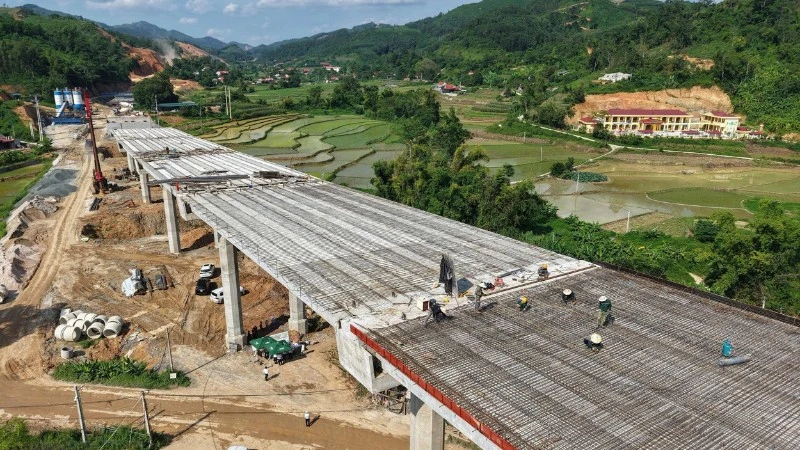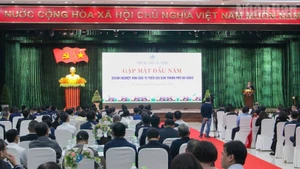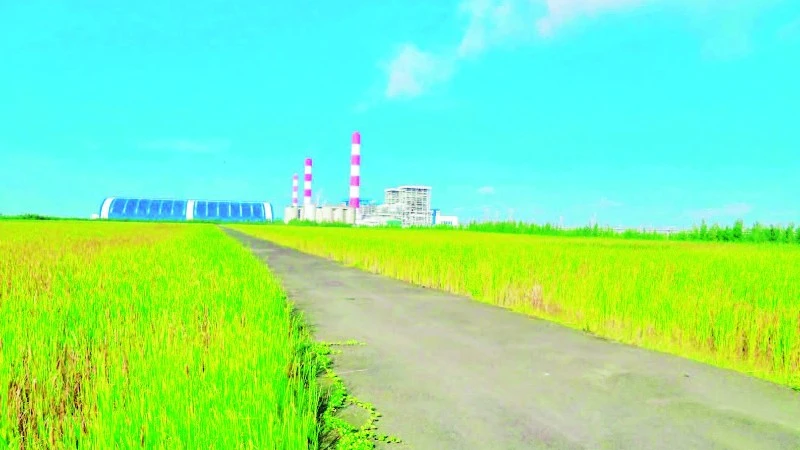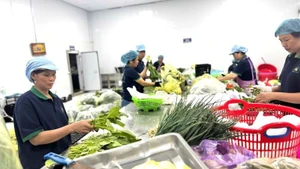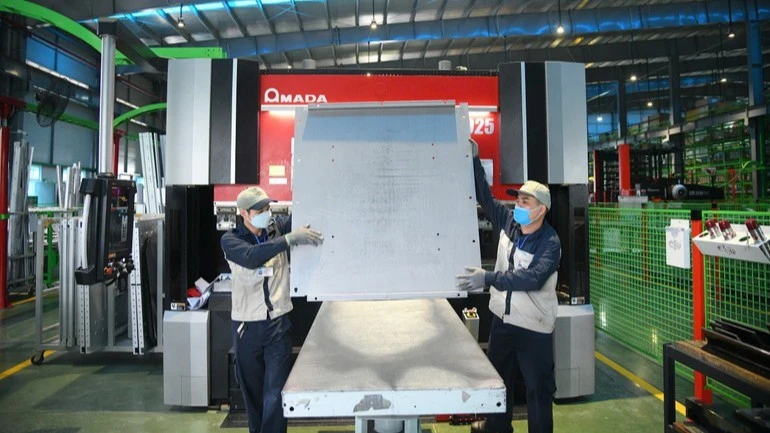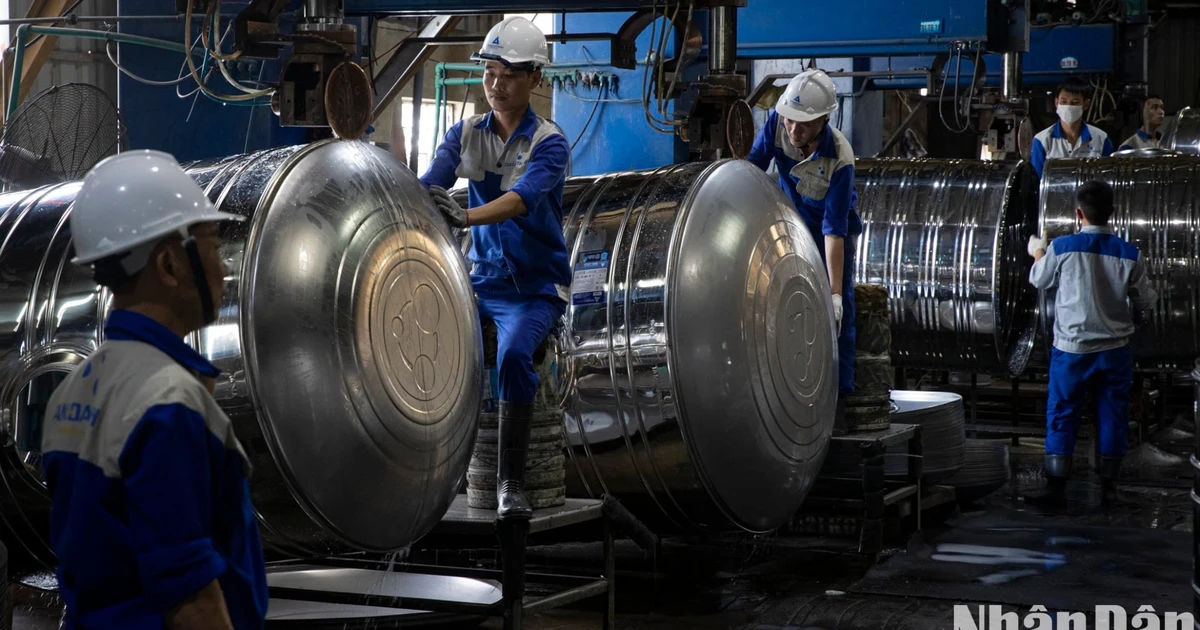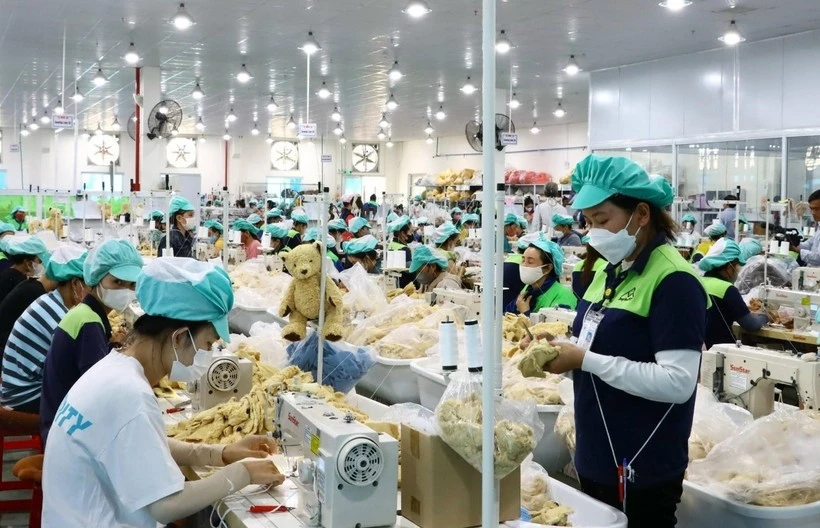Socio-economic performance in the first eight months of 2025 recorded positive results across most sectors. Macroeconomic indicators remained stable, major economic balances were ensured, growth momentum was sustained, and inflation was kept under control.
Public investment considered as key driver
According to the General Statistics Office, the Index of Industrial Production (IIP) is estimated to have increased by 8.5% year-on-year in the first eight months of 2025, with growth recorded in all 34 provinces and cities. Notably, business activity continued to show improvement, with more than 209,000 newly established and reactivated enterprises nationwide, up 24.5% over the same period last year. On average, 26,200 enterprises were newly established or returned to operation each month, while 20,100 enterprises exited the market.
State budget revenue reached over 1.74 quadrillion VND, equal to 88.5% of the annual target and up 28.5% year-on-year. Total budget expenditure stood at 1.45 quadrillion VND, fulfilling 56.3% of the annual plan and rising 31.5% from the same period.
Traditional growth drivers were further stimulated and renewed, with total retail sales of goods and consumer services rising by 9.4% year-on-year, reflecting robust domestic demand. Total import–export turnover reached 597.93 billion USD, up 16.3%, resulting in a trade surplus of nearly 14 billion USD. The average Consumer Price Index (CPI) in the first eight months rose by 3.25%.
Despite the nationwide implementation of the two-tier local government model, public investment still recorded positive results, with disbursement reaching 410 trillion VND - an increase of about 135 trillion VND compared to the same period last year. Deputy Minister of Finance Tran Quoc Phuong noted that public investment disbursement since the beginning of this year has surpassed previous years in both absolute value and pace, fulfilling 49% of the Prime Minister’s initial annual plan and 46.3% of the supplementary allocation. This represents a very positive outcome as the country vigorously restructures its administrative apparatus and rolls out the two-tier local government model.
However, to achieve the target of fully disbursing the 1 quadrillion VND public investment allocated for this year, ministries, sectors, and localities still face multiple challenges. These include issues related to capital allocation, restructuring under the two-tier local government model, improvements to the legal framework, and project implementation.
Currently, about 38.5 trillion VND of central budget funds remain unallocated due to projects lacking sufficient procedures or requiring reassessment following the merger and consolidation of administrative bodies. The Ministry of Finance is developing a “handbook” compiling all guidelines on public investment disbursement, enabling localities to implement them proactively and consistently without having to seek approval from managing agencies as before.
The Government identifies public investment disbursement as a key driver to mobilise and spread social resources. In Directive No. 159/CD-TTg on fiscal and monetary policy management, the Prime Minister instructed the Ministry of Finance to provide effective support to the Prime Minister’s task forces in urging ministries, sectors, and localities to achieve 100% disbursement of public investment funds. The Ministry was also tasked with proposing breakthrough, concrete measures to accelerate disbursement in the final months of the year, particularly for agencies and provinces with large funding allocations.
The Prime Minister further requested ministries, sectors, and localities to act with greater urgency, decisiveness, and effectiveness in implementing tasks and solutions to boost public investment disbursement. Special attention is to be given to expediting key infrastructure projects in energy, transport, healthcare, and education, with the goal of reaching at least 60% disbursement of annual plans by the end of the third quarter of 2025.
Maintaining macroeconomic stability
According to the Ministry of Finance, in the final months of the year, it is essential to resolutely and comprehensively implement a range of measures to meet growth requirements. These include urgently completing the projects assigned by the Politburo on economic development; decisively and effectively carrying out Conclusion 186-KL/TW of the Politburo and Secretariat on the performance of the political system and the two-tier local government, especially tasks scheduled for completion in September 2025, in order to promptly resolve practical difficulties and obstacles. In addition, institutional and legal improvements, as well as efforts to enhance the investment and business environment, must continue to be vigorously pursued; exports need to be boosted; and traditional growth drivers should be further promoted and renewed alongside the development of new growth drivers.
The Ministry of Finance also emphasised the need to focus on maintaining macroeconomic stability and controlling inflation in the final months of the year. This was also a key topic discussed by economic experts at a recent consultation forum on the socio-economic situation organised by the National Assembly’s Committee on Economic and Financial Affairs.
To achieve the 8% growth target for 2025 and double-digit growth in subsequent years, Associate Professor Dr. Pham The Anh, Dean of the Faculty of Economics at the National Economics University, recommended that Viet Nam adopt appropriate macroeconomic policies to harness domestic strengths while minimising risks from global macroeconomic instability and geopolitical tensions.
Accordingly, fiscal policy should be directed towards the overarching goal of promoting long-term growth and ensuring public debt sustainability. In terms of monetary policy, inflation control must remain the top priority; the pace of money supply growth should be managed in line with growth and inflation objectives. Both fiscal and monetary policies should be conducted in a transparent and predictable manner so that businesses and citizens can make long-term decisions with confidence.
“Viet Nam needs to adopt appropriate macroeconomic policies to harness domestic strengths while minimising risks from global macroeconomic instability and geopolitical tensions.”
— Associate Professor Dr. Pham The Anh, Dean of the Faculty of Economics, National Economics University
Sharing the same view, Professor Dr. Tran Tho Dat, Chairman of the Scientific and Training Council at the National Economics University, stressed that the current domestic and international context requires Viet Nam to exercise caution in governance while remaining steadfast in the goal of maintaining macroeconomic stability. All growth-support policies must be grounded in macroeconomic stability, uphold market discipline, and enhance both labour productivity and capital efficiency.
Fiscal and monetary policies should focus on short-term measures to maintain liquidity, control inflation, and direct credit flows into priority sectors, while at the same time pursuing medium- and long-term objectives so that the financial system can truly become a driver of rapid and sustainable growth.
